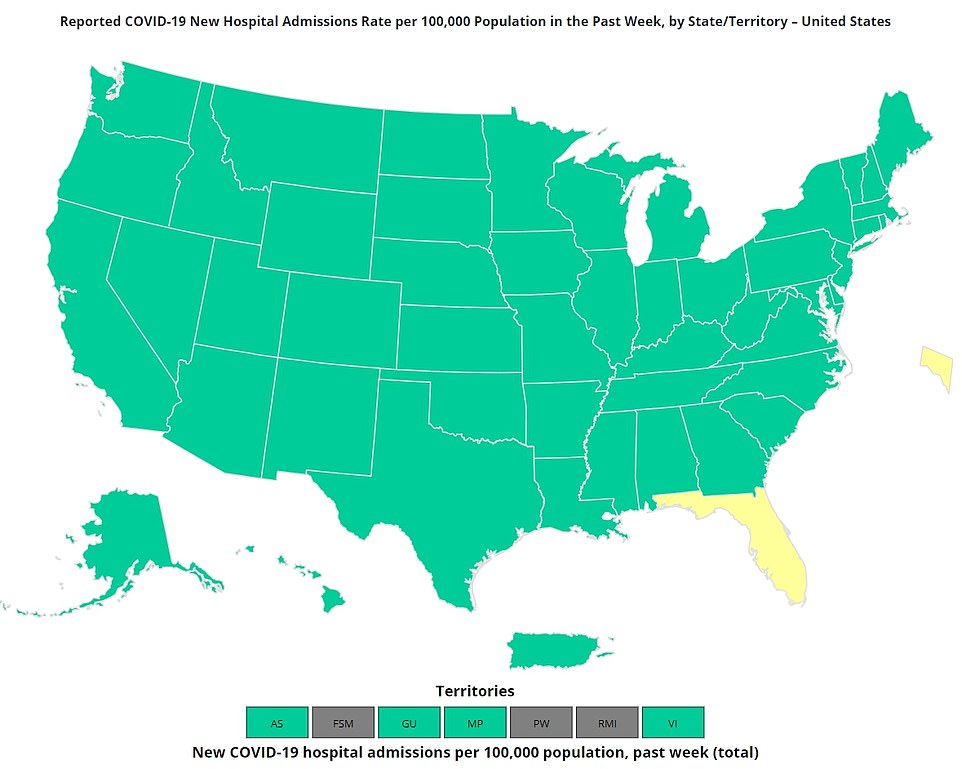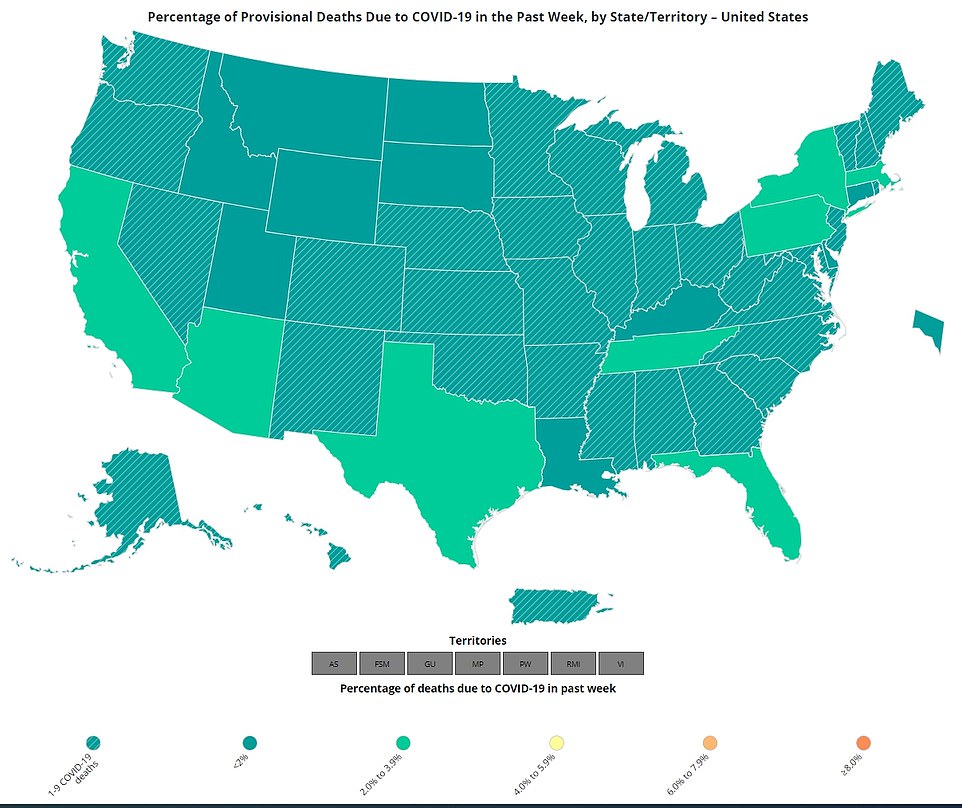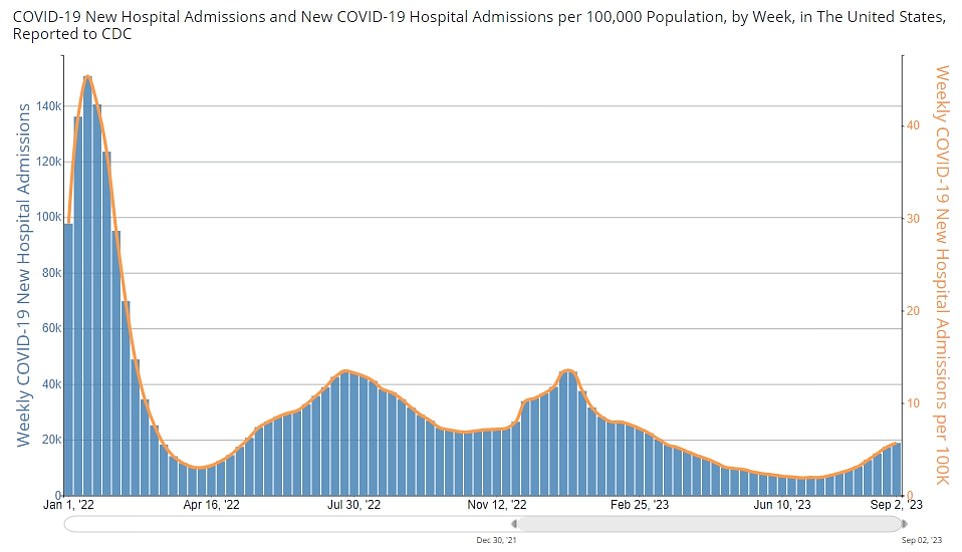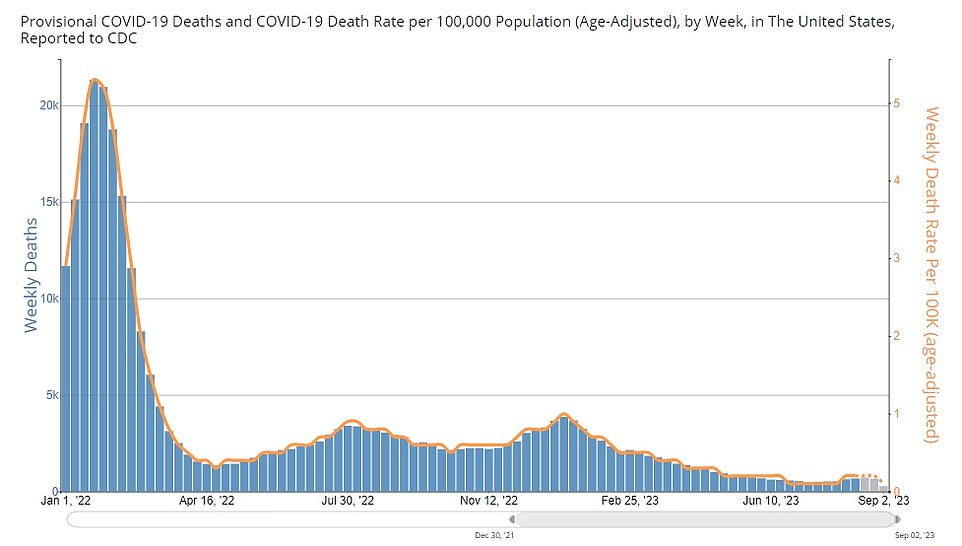Are you living in a Covid hotspot? CDC reveals counties with highest rates as virus hospital admissions rise for 8th week in a row – but they’re still at near-historic lows
The US counties with the highest numbers of Covid hospitalizations during the last week of August have been revealed in an interactive map from the Centers for Disease Control and Prevention (CDC).
The latest official data shows that admissions have now risen for eight weeks in a row – up from the historically low rate of two hospital admissions per 100,000 people at the end of June 2023 – and now stand at almost six admissions per 100,000 per week which ended on September 2.
And this rate is increasing in about half of the 3,224 counties in the United States.
However, while the rate is rising, it remains much lower than the record highs of January 2022, when it hovered around 40 hospitalizations per 100,000 people.
Experts say the US will see further increases in Covid hospitalizations and deaths in coming weeks as winter approaches, but the surge in Covid admissions will not be like those of previous winters.
Despite the warnings, Dr Anthony Fauci said yesterday that he would be “extremely surprised” if face mask mandates or other restrictions returned, although he added that they may be recommended in some areas.
The above map shows the Covid hospitalization rate in the US during the week ending September 2, the most recent available. This shows that most provinces have a low number of hospital admissions. There are 22 provinces with a high number of hospitalizations, shown in orange on the map
Although Covid has become milder as more people have acquired immunity through previous infections or vaccinations, the emergence of new, more transmissible variants is causing the number of cases to rise.
However, there is no evidence that the virus is more likely to cause serious illness. Instead, variants are evolving to become more transmissible but less likely to cause hospitalization.
The latest CDC data on Covid hospitalization rates was for the week ending September 2 and covered all 3,224 counties in the US – including subdivisions of the country’s territories such as Puerto Rico and Guam.
At the state level, figures showed hospitalizations were highest in Florida, where they rose to almost twelve Covid admissions per 100,000 people.
The second highest rate was recorded in Washington, DC, where the level was 11 per 100,000, and Alabama had the third highest rate, at 8.4.
By county, Wilson County in Kansas had the highest Covid hospitalization rate of 70 patients per 100,000 people — although this was likely inflated due to the county’s small population of just 9,000 people, according to the U.S. Census.
It was followed by two Missouri counties — Grundy and Mercer — where the rate was 44.6 per 100,000.
Of the 22 counties with a Covid hospitalization rate above 20 per 100,000, which is considered high alert by the CDC, 17 were in the South. Georgia had the most – six counties – followed by Oklahoma, which had four, and Texas, with three.
At the other end of the spectrum, however, 303 counties – or about one in 10 – have recorded no Covid admissions in the past week. Data is available.
Dr. Thomas Moore, an infectious disease expert at the University of Kansas, told DailyMail.com that he expected to see a surge in Covid admissions in counties later this year, but added that this was most likely not would match the levels seen in previous waves.
He said: ‘If our experience can be generalized, I believe most communities will experience an increase in outpatient and emergency room visits, and I expect some increase in hospital admissions.
“But absent the emergence of a Paxlovid-resistant or vaccine-resistant strain, I expect there will be nothing like the spikes we experienced with any of the previous strains, including Delta and Omicron.”

The above map shows the number of Covid hospitalizations per 100,000 people in the US by state in the week ending September 2

The map above shows the percentage of deaths in each state linked to Covid infection

The graph above shows the number of Covid hospital admissions from January 2022 to September 22. Hospitalizations have now risen for eight weeks in a row, even as they rise from historic lows

The graph above shows Covid deaths over 2022 and 2023. These have also started to rise in recent weeks
Official data shows that Covid cases are increasing nationally. The latest complete data available, for the week ending August 26, shows the test positivity rate increased to 13.6 percent from the week before 14.1 percent.
The CDC’s provincial data comes after Dr. Anthony Fauci said nationwide face mask mandates would not return this winter even if there were a significant increase in Covid cases.
Despite being criticized for his comments in the past, the former White House chief medical adviser said he would be “extremely surprised” if blanket restrictions returned at the federal level.
But he couldn’t promise that masks would no longer be “recommended” at the state or local level — after schools, colleges and businesses across America began asking staff and students to wear them again.
The 82-year-old Fauci also said the risk that a deadly Covid wave, rivaling previous peaks of the pandemic, will reoccur is “probably low” because so many Americans have immunity from vaccination or previous infections.
Asked if mask mandates would return ABC ‘This Week’Dr. Fauci said, “No, I don’t see that in the future at all.
‘I would imagine that if we see a significant increase in cases, you may see the recommendation to use masks in certain circumstances and in crowded environments.
“But I don’t see any, and certainly no federal mandates. I would be very surprised if we did see that.”
